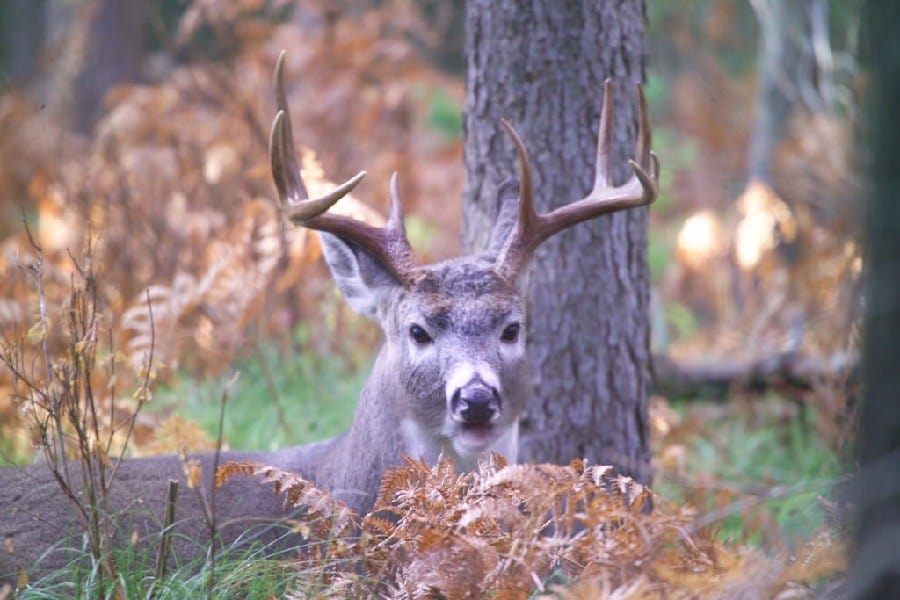Things Hunters Don’t Know About Whitetail Deer – The thrill of hunting whitetail deer is something that can’t properly be put in words. These often elusive creatures can be tricky to hunt.
Whitetail deer and mule deer are the most populous species of deer in North America. Whitetails can be found in deciduous forests, marshes, and even urban areas. These animals are considered “opportunistic eaters” meaning they will consume any type of vegetation available to them.
Things Hunters Don’t Know About Whitetail Deer
Most hunters will look to gain an advantage on these deer any way they can. The proper knowledge can gain the hunter a measurable advantage over the whitetail. Using a deer attractant can increase your chances of being successful with whitetail deer.
Large Antlers are the Result of Three Factors
Large antlers on a whitetail deer are the result of proper diet, genes, and age. This combination determines how large deer antlers will grow. Learn more about animals with horns.
Deer Have Good Night Vision
Hunting whitetail deer in the morning is ideal because they are able to see better at night than in the day. Deer are able to spot shapes at night accurately they may not be able to identify in the daylight easily.
Using night vision and thermal technology for hunting is becoming more common.
Michigan is Perfect for Whitetail Hunting
Michigan is a hunter’s paradise. This holds true for the whitetail deer hunter in particular. Whitetail hunting is so popular there that there is hunting property for sale in Michigan.
Deer Change Their Coat During the Season
Deer are able to brave some severe weather conditions. The thickness and color tend to change with the seasons. A deer may have a reddish-brown coat during the summertime and have a grayish coat during the winter.
Deer Don’t See Bright Colors Well
Deer perceive many bright colors as shades of gray. At night time these colors are easier to spot in the nighttime by the deer than in the daylight. This means that the deer may not be able to see the bright orange colored hunting clothes in the daytime if you are stealthy.
Deer Have a Diverse Diet
Deer are not the pickiest of eaters. In fact, other than the apparent wild grass that deer consume, deer will also eat leaves, nuts, and acorns. They are known to destroy gardens.
Adult Deer Have the Same Number of Teeth as Humans
Deer share one fantastic similarity with humans. Just as adult humans have 32 teeth, mature deer also have 32 teeth. It’s an interesting deer fact, but it likely won’t help with hunting.
Deer Feed Predominantly During the Daytime
On similarity that humans and deer do not share in the late dinner time. Deer are most inclined to consume their meals during the daytime.
Deer Use Their Tails to Send Signals
The tail of the whitetail deer is obviously the reason for its namesake. However, the tail of the whitetail deer is used to signal to other deer in their surroundings. Twitching is a common sign that there is no danger to other deer.
Whitetail Deer Live a Long Time in the Wild
Many hunters are curious about the lifespan of deer in the wild. Deer are able to live a surprising 15 to 25 years in the wild. Does are actually able to live a bit longer; 20 to 25 years. Depending on the habitat, the life of the whitetail deer, also known as “white tailed deer” or “white tail deer,” can be threatened by man (hunting, automobiles, traps, etc.) and predators such as bears, coyotes, wolves, and mountain lions.
Hunting Whitetail Passion
Hunting whitetails is a passion and a labor of love. Hopefully, these tips will offer you the hunter’s advantage. No matter what type of deer you hunt or where you are, the edge will now belong to you, the hunter.
Preparing for Food Crisis Challenges Coming Our Way
Planning Food Storage and Survival For When a Disaster Strikes

